Key takeaways:
- Effective advocacy in student unions requires active listening and genuine engagement to connect with the diverse perspectives of the student body.
- Failure often stems from a disconnect between advocates and students, unclear goals, and lack of collaboration with other organizations.
- Personal stories and ongoing communication are crucial strategies for making advocacy efforts relatable and maintaining momentum.
- Reflection and adaptability after setbacks are essential for growth and improving future advocacy initiatives.
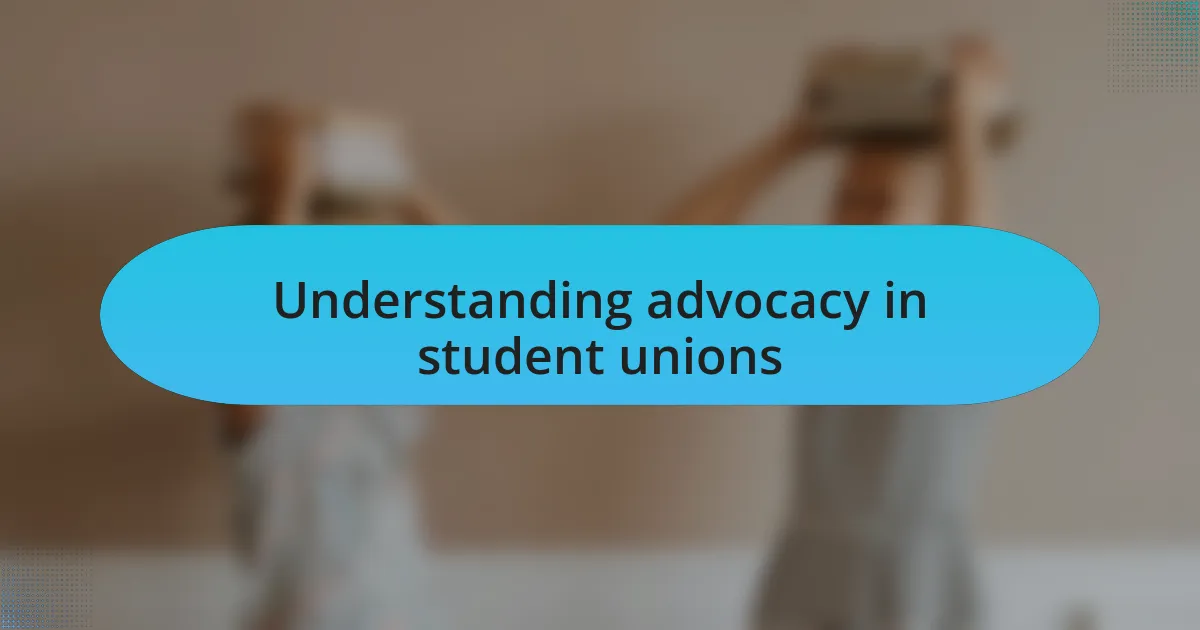
Understanding advocacy in student unions
Advocacy within student unions is about amplifying the voices of the student body, ensuring that their concerns, ideas, and needs are represented effectively. I remember when I first joined my union; the excitement was palpable, but I quickly realized many students felt disconnected from the advocacy process. This experience led me to wonder: How can we bridge that gap and truly represent every voice in our community?
There’s an intricate dance involved in advocacy, where strategy meets passion. I’ve often felt the frustration of planning a campaign that didn’t resonate with my peers, causing me to ask myself, “What went wrong?” It’s essential to recognize that advocacy isn’t just about speaking out; it’s about listening actively and adapting the message to reflect the diverse perspectives within the union.
For me, the most profound moments in advocacy occur when genuine connections are made. During a recent forum, I saw students share their personal stories, illuminating issues I had never considered before. It was a reminder that advocacy is not just a tactical effort; it’s about fostering empathy and creating a community where every voice feels valued. How do we cultivate this environment? It starts with conversations that encourage openness and trust among us all.
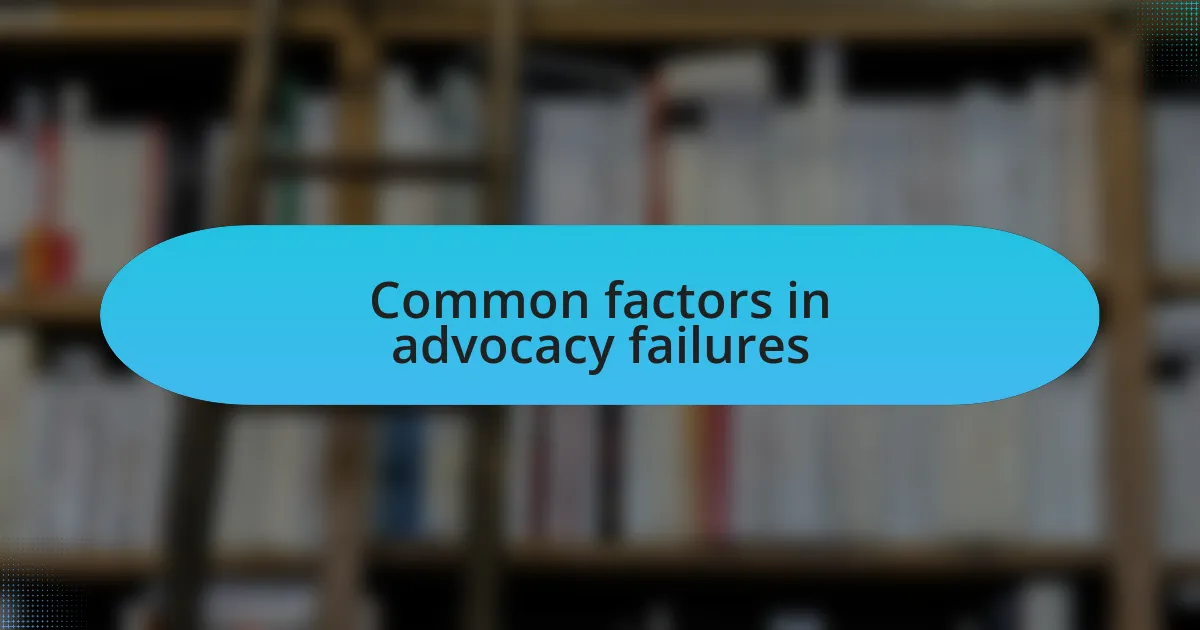
Common factors in advocacy failures
One common factor in advocacy failures is the disconnect between the advocates and the student body. I remember spearheading a campaign focused on mental health resources, only to find that the messaging didn’t resonate with many students. It struck me that without first understanding their specific needs and experiences, I was simply speaking into a void, failing to connect.
Another significant issue is the lack of clear goals and strategies. In my early advocacy efforts, I launched initiatives without a well-defined plan, leading to scattered efforts and minimal impact. I’ve learned that without a focused approach, our passions can become misdirected, and it’s easy to lose momentum when the objectives are vague.
Lastly, I’ve encountered the challenge of insufficient collaboration with other organizations. During a university-wide campaign, I assumed my union’s perspective was enough to drive change. However, when we didn’t actively engage with other groups, like cultural clubs and academic societies, our message became narrow and less effective. It left me questioning how much stronger our collective voices could have been if we had united our diverse perspectives from the start.

My personal experiences with advocacy
My journey in advocacy has been filled with enlightening moments that often stemmed from unexpected setbacks. One time, I passionately organized a sustainability initiative, believing I had a great plan. However, when the event day arrived, I was met with frustration as turnout was dismal. It made me realize how crucial it is to actively involve students in the planning stages—after all, if they don’t feel part of the process, why would they show up?
Another experience that sticks with me was during our push for better dining options on campus. I approached it with enthusiasm, but without much thought regarding dietary preferences and restrictions. When students expressed their concerns about inclusivity, I felt an ache in my heart realizing that my excitement had overshadowed their voices. It was a humbling moment that taught me the importance of listening to the community I aimed to serve.
Then there was the time I faced a major obstacle when our campaign for improved mental health resources stalled. I had gathered some great data and insights, only to find that my presentation fell flat with decision-makers who, frankly, didn’t relate to student concerns. I couldn’t help but wonder if I had approached them in a way that genuinely made them understand the urgency of the issue. This experience reinforced the lesson: advocacy isn’t just about presenting facts; it’s about connecting emotionally with your audience.
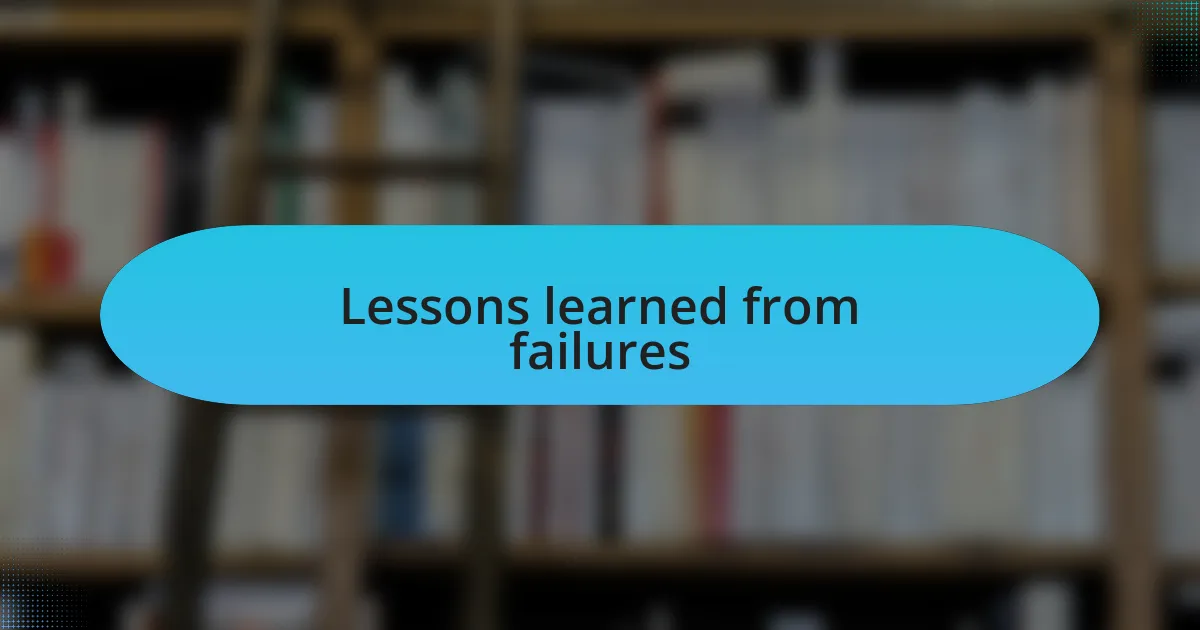
Lessons learned from failures
It’s surprising how much a simple misstep can deepen our understanding. For instance, during a campaign aimed at promoting mental health awareness, I mistakenly assumed that students would naturally want to engage with the resources we provided. Looking back, I realize that the materials lacked a personal touch. Did I really think a flyer would address their emotional struggles? This oversight taught me that authentic connection can often be more effective than merely distributing information.
One of my most striking lessons came when I attempted to advocate for longer library hours. I was hopeful that the administration would easily see the benefits. However, it quickly became clear that I hadn’t taken into account the budget constraints they faced. Why didn’t I consider the logistical challenges earlier? This experience taught me the importance of understanding all sides of an issue and approaching advocacy with a broader perspective.
I also vividly recall an instance when I rallied students for a campus-wide referendum. In my excitement, I overlooked providing clear communication about the process, leading to confusion and apathy. Watching students disengage felt like a punch to the gut. It forced me to confront a critical question: what good is enthusiasm if it doesn’t translate into informed action? I learned that clarity and transparency are just as vital as passion in fostering a successful advocacy effort.
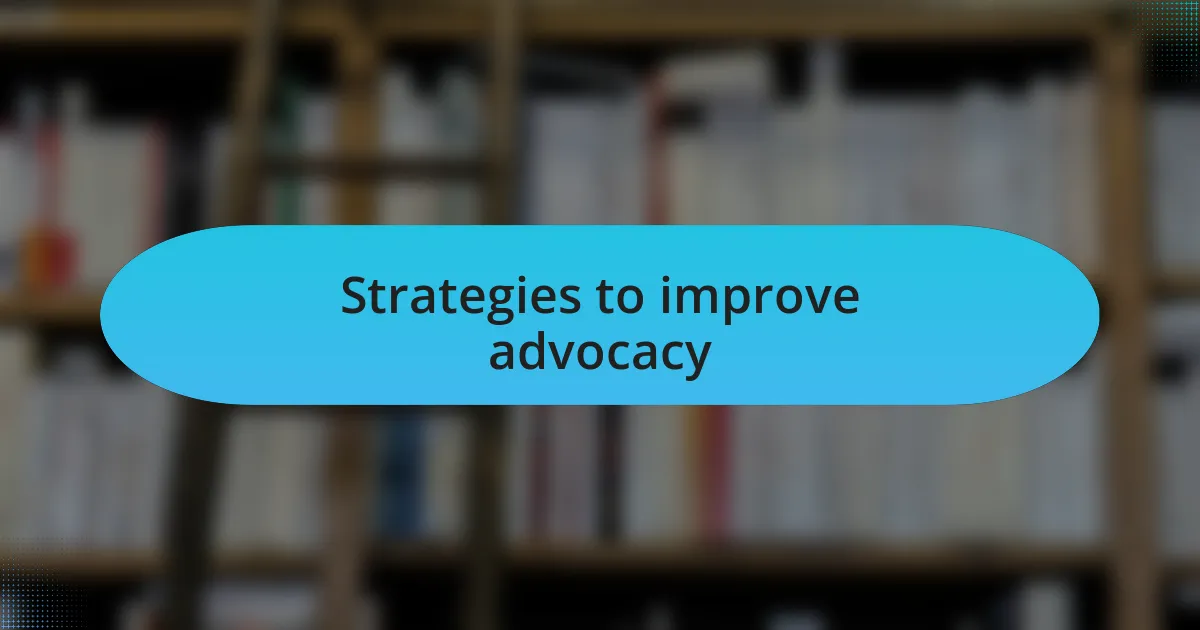
Strategies to improve advocacy
To enhance advocacy efforts, I’ve found that early engagement with key stakeholders makes a remarkable difference. For instance, when I tried to push for better mental health resources, I initially neglected to involve student organizations that already had their pulse on the campus climate. By collaborating with them from the start, I could have tapped into their insights and built a coalition that resonated more strongly with the student body. Why not leverage the networks already in place to foster a more potent message?
Another strategy that proved invaluable was gathering real stories from those affected by the issues at hand. During my advocacy for extended library hours, a peer shared her late-night study struggles and how our current hours impacted her grades. That personal narrative struck a chord with both my peers and decision-makers. Ultimately, stories humanize the statistics and can make our case so much more relatable. Isn’t it fascinating how one authentic experience can shift the entire conversation?
I also learned the power of consistent follow-up after initial conversations. After proposing changes to campus dining options, I realized that ongoing communication helped maintain momentum. When I sent periodic updates and checked in with administrators and students alike, it kept everyone engaged and reminded them that advocacy is a marathon, not a sprint. How can we expect change if we don’t keep the dialogue open and ongoing? By fostering continual engagement, we not only reinforce our commitment but also ensure that the struggle for student needs remains at the forefront.
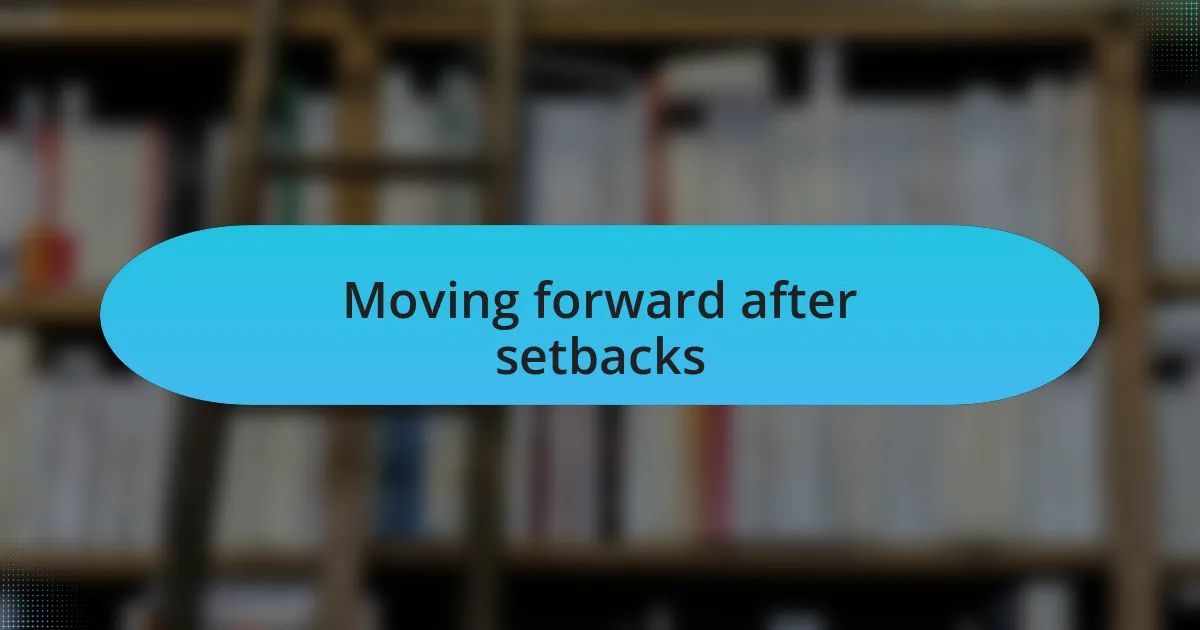
Moving forward after setbacks
After encountering setbacks in my advocacy efforts, I realized the importance of reflection. I once faced a significant roadblock while campaigning for improved accessibility on campus. Instead of wallowing in disappointment, I took a step back and analyzed what went wrong. This process not only equipped me with valuable lessons but also ignited a renewed determination to adapt my approach. Isn’t it incredible how a moment of introspection can lead to a stronger foundation for future initiatives?
Another aspect of moving forward is embracing adaptability. When my proposal for enhanced student support services was dismissed, I felt crushed initially. However, instead of seeing it as a definitive failure, I recognized it as a chance to reevaluate my tactics. I reached out to professionals in similar roles at other universities and learned how they navigated similar challenges. This flexibility allowed me to reframe the issue and suggest a revised plan that ultimately gained more traction. Have you ever thought about how a shift in perspective can open new doors?
Ultimately, surrounding myself with a support system has been crucial in overcoming setbacks. When I faced opposition to my initiatives, it was my peers and mentors who provided encouragement and fresh insights. Sharing experiences in a safe space, where everyone understands the challenges of advocacy, fosters resilience. It made me realize that I’m not alone in this journey; we are all striving towards the same goal of bettering our university. How uplifting is it to know there’s a community ready to lift you up when you stumble?